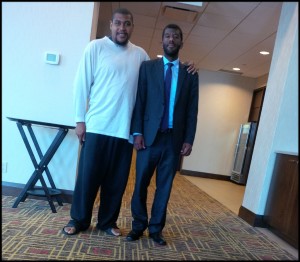Even though she has worked all her life, Dawn Doyle now visits the food bank twice a month.
She says 2015 was a devastating year for her.
“We have nothing,” she said on her sister’s phone. Her own phone has since been disconnected after failing to pay the bills.
Doyle was one of six employees for Harmony House for Girls, a home for troubled youth in Hilden, NS.
She worked there for ten years before it shut down in 2014.
But she isn’t sad to see it go.
During her time at Harmony House, Doyle and her five coworkers were members of the Canadian Union of Public Employees, local 4782. Harmony House and its owner, Rorie Digault, did not pay retroactive wages and RRSP contributions to the employees from 2009 to 2011.
The workers filed grievances in 2013 and a hearing was held in July 2015.
After an agonizing wait, Doyle and her co-workers won the decision and were awarded over $212,000 in back pay, severance packages, RRSP contributions, and aggravated damages while the union were awarded their dues.
This pie chart below illustrates a breakdown of the claims made by the six employees and the union.
Still, winning a decision and getting paid are two different things, according to lawyer Derek Brett who was not involved in the case.
“The process doesn’t always work out,” he said.
One year later, Doyle is living proof of that.
‘This is a matter between the employees…and their employer,” said Department of Community Services
The provincial government funded Harmony House while Doyle was still an employee.
From 2009 to 2011, the government had even given Harmony House a surplus of funds in order to compensate for the retroactive pay to the employees.
But when the province took a closer look into the home’s finances only to find malfeasance, it immediately stopped funding in 2014.
Click the timeline to see how the case unfolded throughout the years, from suspicions in 2009 to the present day. Since then, the Department of Community Services, which oversaw Harmony House, stated that the government has no role in this dispute anymore.
“This is a matter between the employees, the union, and their employer, which is Harmony House, not the Department of Community Services,” said media relations advisor for Department of Community Services Heather Fairbairn in an email statement.
In the 2015 decision, arbitrator George Filliter recommended the government investigate Harmony House’s finances.
However, this has not happened yet.
“No one (from the government) has spoken to us about the wrongdoing that has been done,” said union representative Grant Dart.
Doyle equally blames the government over what has happened to her over the past year.
“I’m down-hearted because no one is stepping forward,” she said.
This is why, despite her financial troubles, she refuses to take welfare. The government already owes her money, so there is no sense in asking for some, she said.
The next step
More than anything, Doyle would like to see a lawyer so that the province can hold her former employer accountable.
“We would like to see the government prosecute (Digault).” Contact information for Digault could not be found for this story.
Instead of battling this out in court, Brett believes that it may be more effective to use the ballot.
“If the (government) is not being responsive, then you go to the elected,” he said.
Dart says that the union has tried to pressure MLAs and MPs to do something.
Right now, the only option is just to wait.
Hear more about what Dart has to say about the future of this case by clicking on this Soundcloud link. “It’s our hope that we try to make some right in this process,” he said.
Doyle is tired of people telling her how wrong this whole situation was.
She wants action, but the spectre of her debts and the unfairness of their cause still hang over her day after day.
“There is no way I’m ever going to recover from this.”
Read the decision made by the arbitrator granting the award to the employees and union.








